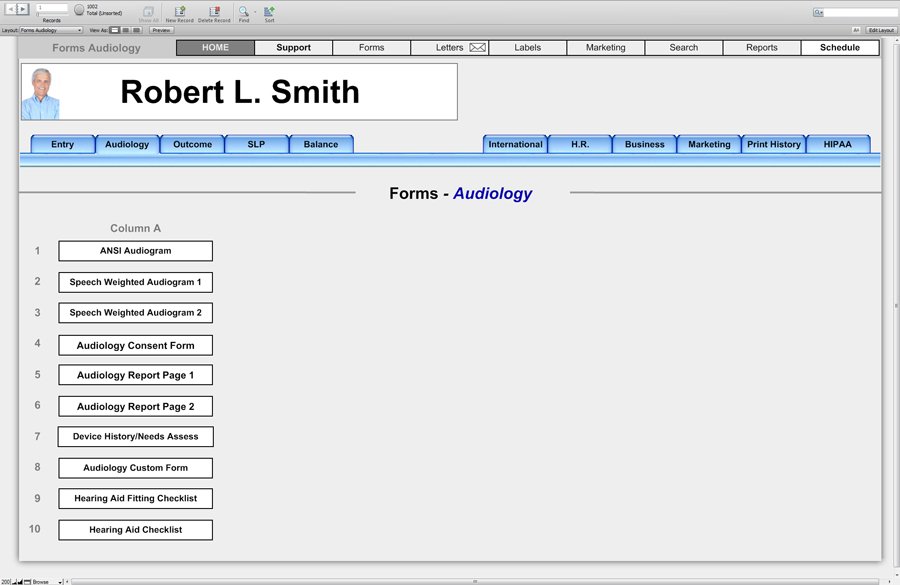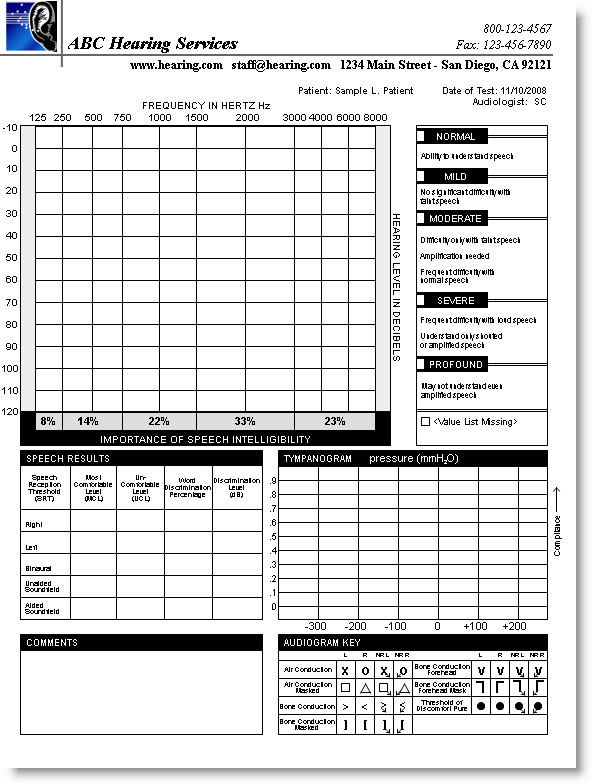Audiology Forms
HearForm prints blank audiograms in three different styles. Patient demographics are printed on forms. Patient demographics are automatically added to the form. These forms are used by those who like to fill out audiograms by hand, while testing. The completed audiogram can then be used as a teaching tool, perhaps to motivate the patient to get the help that they might need.

- These forms are used by those who like to fill out audiograms by hand, while testing. The completed audiogram can then be used as a teaching tool, perhaps to motivate the patient to get the help that they might need.
- These forms are designed to be printed out and filled in by hand by the clinician. The benefit of doing this, as opposed to printing out a copy of the audiogram you have already entered on the computer, is that it can be used as a teaching tool to explain to your patient the degree of their hearing loss. It can be helpful in getting a patient out of denial and toward getting help for their loss.
- Some personalized information will appear on this form, including your office’s letterhead, the patient’s name, the date and the clinician’s initials. (Note: Be sure to start out on the Patient Overview screen of the patient that you are testing, so the proper name will be printed on the form.)
- Modifications can be made to these forms, if desired, in layout mode. Click “View” on the HearForm toolbar and select “Layout Mode.” If you prefer keyboard shortcuts, simply use Ctrl + L. (Note: You must have administrative rights on your computer to use Layout Mode.)
There are three audiogram forms from which to choose:
- The Standard Blank Audiogram is a basic ANSI form. It has the standard column width at 125, 250 and 500 Hz.
- The Speech Weighted Audiogram (10 db) is designed specifically to follow the Speech Intelligibility Index. Although this is not an ANSI audiogram, it is scientifically based. The widths of the columns are designed to show the patient the importance of each frequency in the understanding of speech. For example, since only 8% of speech is heard in the very low frequencies, they are sized accordingly. The middle frequencies are given more space on this audiogram than on a standard one so the patient can more easily see the effect of poor scores in this area on their ability to understand the spoken word. Below the audiogram, it shows the percentages of speech heard in the various frequency ranges, making it easier to quantify the problems associated with loss in those areas. This can be an excellent teaching and motivating tool. This audiogram is made to score in 10 db increments.
- Speech Weighted Audiogram (5 db) is very similar to the above audiogram (10 db) and is also designed to follow the Speech Intelligibility Index. This audiogram, however, takes up the full page and goes from -10 to 105 dB, in 5 db increments. This style helps impress upon the patient the need to move forward and get help for their hearing loss. It also works well for those patients that have poor vision.

- Sample Blank Audiogram
- Sample ANSI Audiogram
- Sample Speech Weighted Audiogram 1
- Sample Speech Weighted Audiogram 2
- Sample Audiology Consent Form
- Sample Audiology Report Page 1
- Sample Audiology Report Page 2
- Sample Device History - Needs Assessment
- Sample Audiology Custom Landscape
- Sample Hearing Aid Fitting Checklist
- Sample Hearing Aid Checklist
